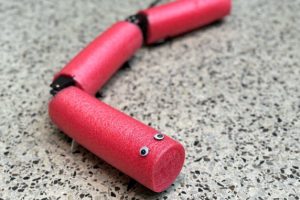
“While drones flying at high altitudes are already being used commercially, drones cannot yet fly autonomously in complex environments, such as dense forests. In these environments, any little error may result in a crash, and robots need a powerful brain in order to make sense of the complex world around them,” said Zurich Professor Davide Scaramuzza.
 Instead of relying on sophisticated sensors, the drone uses a pair of simple cameras and “very powerful”, said the Univeristy, artificial-intelligence algorithms to interpret the images to recognise man-made trails. If a trail is visible, the software steers the drone in the corresponding direction.
Instead of relying on sophisticated sensors, the drone uses a pair of simple cameras and “very powerful”, said the Univeristy, artificial-intelligence algorithms to interpret the images to recognise man-made trails. If a trail is visible, the software steers the drone in the corresponding direction.
“Interpreting an image taken in a complex environment such as a forest is incredibly difficult for a computer. Sometimes even humans struggle to find the trail.” said Dr Alessandro Giusti of Dalle Molle.
Drone beats human
The algorithm is a ‘deep neural network’ that learns from training examples – 20 thousand images of trails gathered by helmet cams while walking trails in the Swiss Alps.
“When tested on a new, previously unseen trail, the deep neural network was able to find the correct direction in 85% of cases. In comparison, humans faced with the same task guessed correctly 82% of the time,” said the University.
More work is needed before drone swarms will search usefully.
 “Now that our drones have learned to recognise and follow forest trails, we must teach them to recognise humans,” said Scaramuzza.
“Now that our drones have learned to recognise and follow forest trails, we must teach them to recognise humans,” said Scaramuzza.
Swiss emergency centres respond to around 1,000 calls annually from injured and lost hikers. The hope is that swarms of drones will complement the work of rescue services teams.
 Electronics Weekly Electronics Design & Components Tech News
Electronics Weekly Electronics Design & Components Tech News



